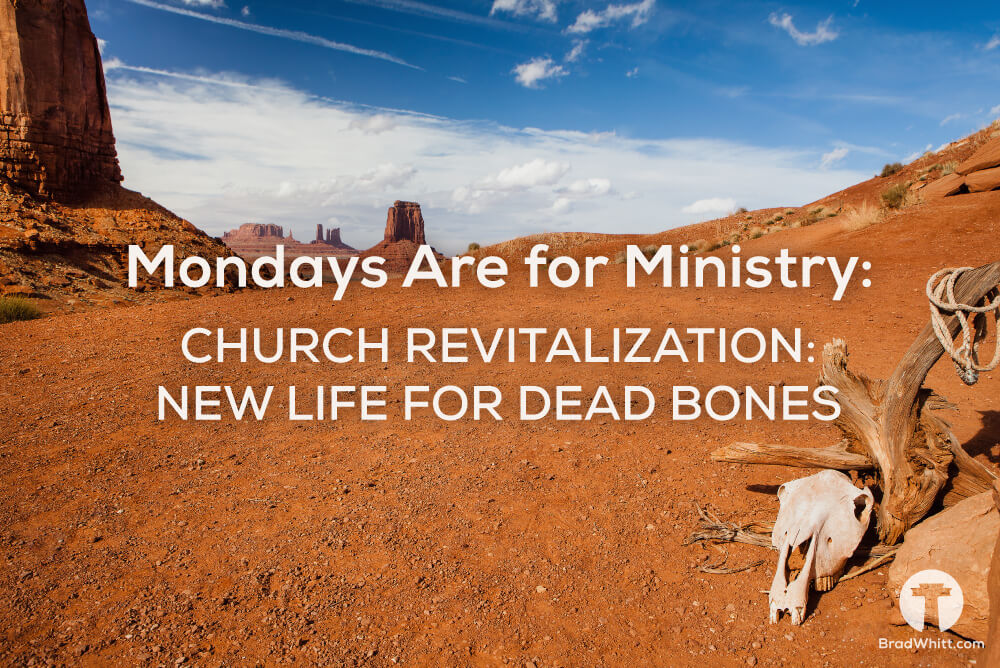
05 Sep Church Revitalization: New Life For Dead Bones
There’s been an increasing amount of talk in recent years about church revitalization.
I say, better late than never.
It’s quite different from the all or nothing push of church planting that dominated “church world” for the past couple of decades because it involves focusing on churches that already exist. You know, the ones with people, buildings, and more often than not, financial resources.
But therein lies the reason some pastors steer clear of established churches. It involves actually working with people. You have to be smarter, wiser, and a lot more patient in how you work, but I can give firsthand testimony that the results are more than worth it.
A little background for those who don’t know me.
I have pastored four churches in 20 years. Two were new church works, one in Tennessee and one in the suburbs of Columbus, Ohio. Both times God blessed, and we saw many saved and baptized. The other two have been older, established churches: one in South Carolina (with a nearly 100-year-old congregation) and my current church, founded in 1774 (two years older than America).
The following five points I wrote down in my notebook over four years ago.
I got to thinking about how I was able to follow a pastor of thirty-plus years and lead an older congregation to become more outward focused – seeking to reach people of all ages, stages, and races for Jesus. (If you don’t know already, following a long-tenured pastor is one of the most challenging assignments any pastor can accept. The tales are too many to tell of the pastors who didn’t even get their books unboxed after attempting to follow a long-term pastor.) Of course, the principles I’m about to share with you assume you’re praying, asking and trusting God to do what only He can do and then doing what He’s called and equipped you to do.
1. Trust.
By the very nature being called to be the pastor of the church, you will likely have some, to begin with. However, you’ll gain more trust as you lead them to achieve some “wins” for the work of Christ. It takes wisdom and patience, but it is worth the effort.
2. Target.
“If you aim at nothing, you’ll hit it every time.” The target can be a specific area or segment of the community, a budget goal that you need to reach to pay the bills, a change in approach, or just not being so mean and ready to fight in every meeting. Have a goal in mind and daily make forward progress towards it.
3. Team.
Build a team around you to help you reach your goal. Remember, “There’s no I in Team,” and you won’t succeed in leading your church if you try to be a Lone Ranger. Gather a group of people around you who are committed to the ministry and vision and then empower them to do the work. This team will be vital to your success in church revitalization.
4. Togetherness.
Spend time with your people. You’re not called to be a performer; you are called to be the pastor. Get out of the green room and walk among your congregation. Live your life with them, show how much you love them, build events and times for them to spend in fellowship with you and each other. One of the things my people say made the biggest difference in my initial acceptance at Abilene was just walking and talking and shaking hands and patting people on their back in the hallways and auditorium before the services.
5. Time.
Mushrooms can pop up overnight. Oak trees take decades – or even hundreds of years – to grow to maturity. Have short term goals and a long term plan and then be patient and consistent in your ministry. Remember that every day you’re the pastor you’re that much more the pastor.
Pastor, let me encourage you today.
Don’t give up. Don’t believe the devil’s lie. You’re not forgotten, and you’re not a failure. God chose you and is using you to build a very special and particular part of His kingdom.
Have a good example of revitalization in the church you lead? Share in the comments below!




Sorry, the comment form is closed at this time.